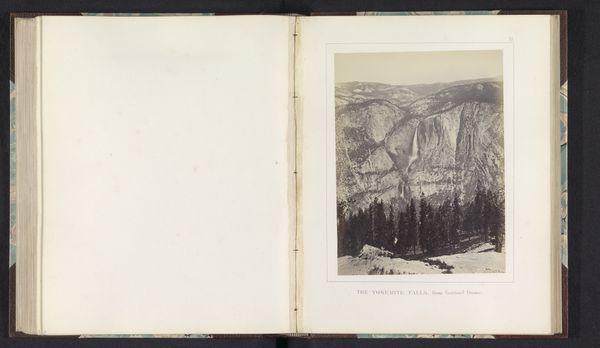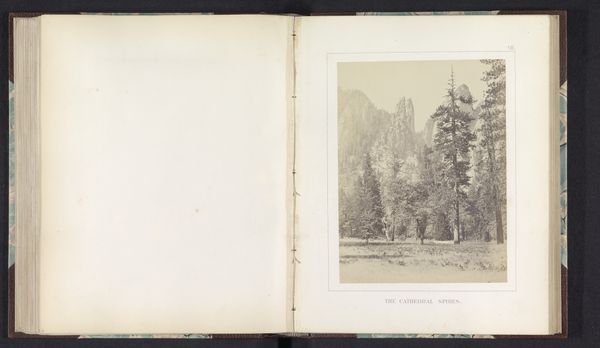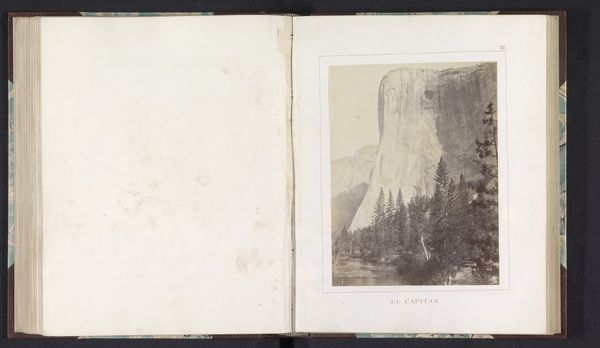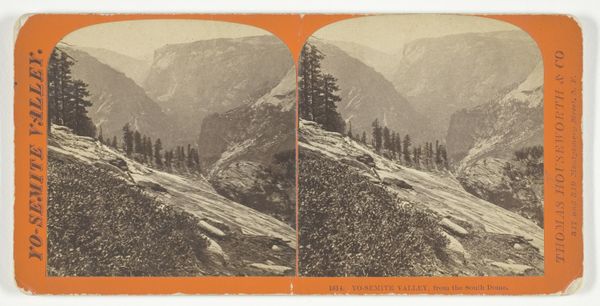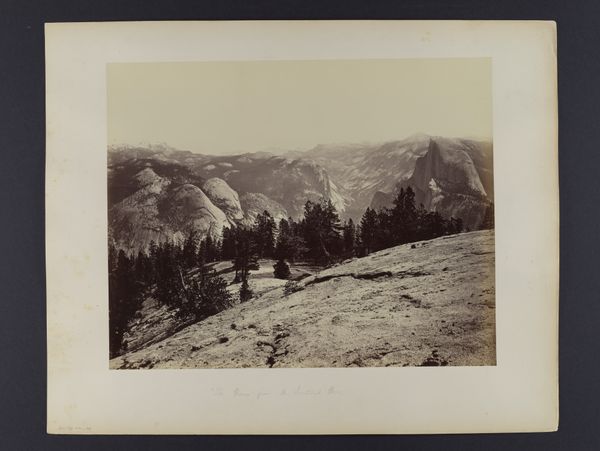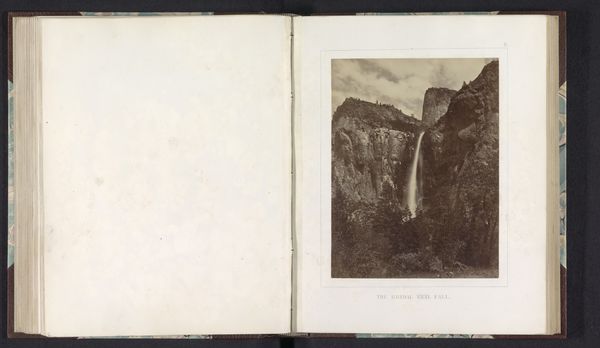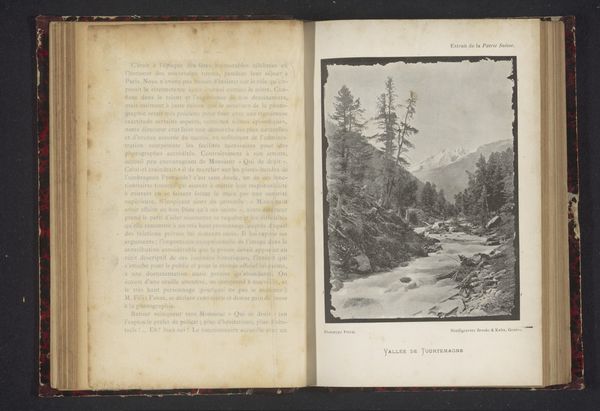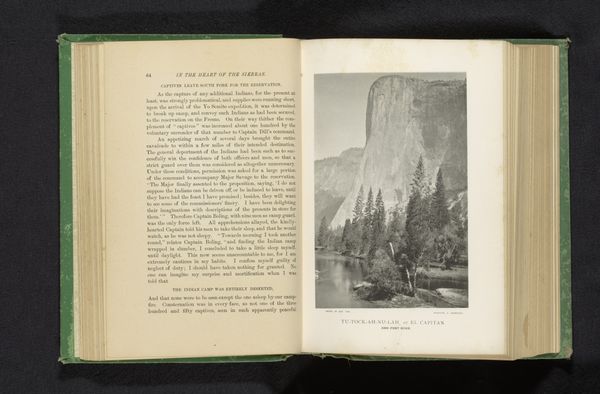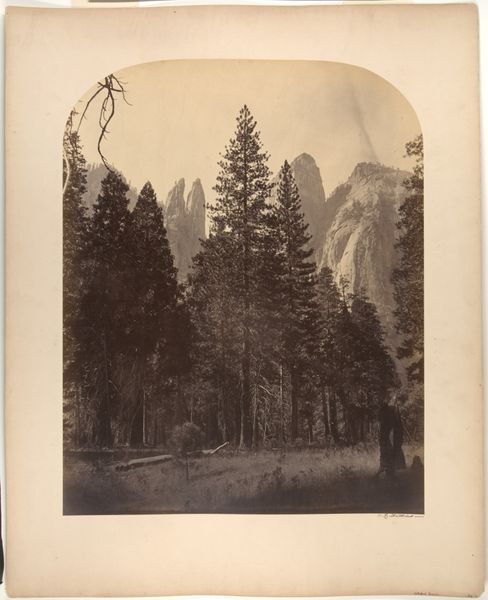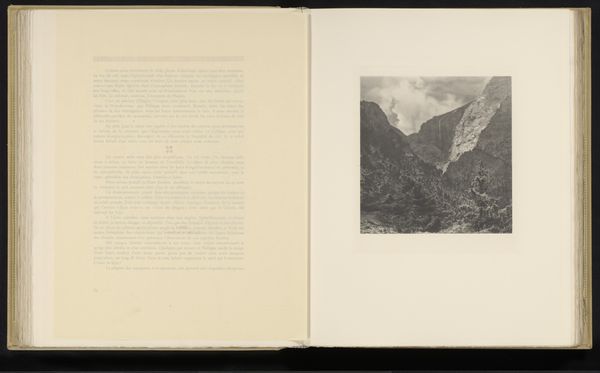
Gezicht op de Nevadawaterval en Liberty Cap in de Yosemite Valley before 1868
0:00
0:00
Dimensions: height 206 mm, width 156 mm
Copyright: Rijks Museum: Open Domain
Carleton Watkins made this photograph of Yosemite’s Nevada Fall and Liberty Cap in the 19th century, by means of a wet collodion process on a glass plate negative. Watkins' images helped to promote the idea of the West as a site of unspoiled natural beauty. His work supported the emerging conservation movement in the United States. Yosemite was becoming a tourist destination at this time, and his photographs encouraged further tourism. They also contributed to a sense of American national identity centered on the idea of wilderness as a unique cultural asset. The cultural and economic effects of Watkins’ photography were complex. On the one hand, it can be seen as a form of promotion for the institutions that supported him, such as the railroad companies that carried tourists to the West. But it can also be seen as contributing to the preservation of the natural environment, in an era where natural resources were being plundered. To understand this photograph, we can look at records from the time – tourist guides, maps, scientific surveys, and the writings of conservationists. These resources help us to see how art and culture can shape our understanding of the natural world.
Comments
No comments
Be the first to comment and join the conversation on the ultimate creative platform.
